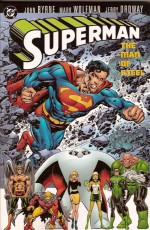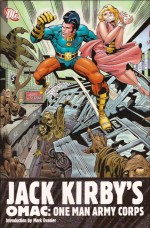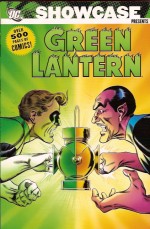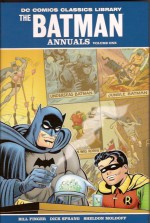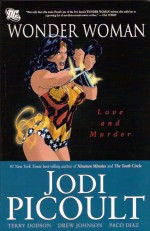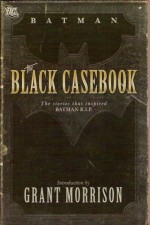
By Bob Haney, Neal Adams & various (DC Comics)
ISBN13: 978-1-4012-1209-4
The Brave and the Bold began in 1955 as an anthology adventure comic featuring short complete tales about a variety of period heroes: a format that mirrored the contemporary movie fascination with historical dramas. Written by Bob Kanigher issue #1 led with Golden Gladiator, the Silent Knight and Joe Kubert’s now legendary Viking Prince. From #5 the Gladiator was increasingly alternated with Robin Hood, but the adventure format carried the title until the end of the decade when the burgeoning costumed character revival saw B&B transform into a try-out vehicle like Showcase.
Issue #25 (August-September 1959) featured the debut of Task Force X: the Suicide Squad, followed by Justice League of America (#28), Cave Carson (#31), Hawkman (#34), and since only the JLA hit the first time out, there were return engagements for the Squad, Carson and Hawkman. Something truly different appeared in #45-49 with the science fictional Strange Sports Stories, before Brave and the Bold #50 provided a new concept that once again truly caught the reader’s imagination.
That issue paired two superheroes – Green Arrow and Martian Manhunter – in a one-off team-up, as did succeeding issues: Aquaman and Hawkman in #51, WWII Battle Stars Sgt Rock, Captain Cloud, Mme. Marie and the Haunted Tank in #52 and Atom and Flash in #53. The next team-up, Robin, Aqualad and Kid Flash, evolved rapidly into the Teen Titans. After Metal Men/the Atom and Flash/Martian Manhunter a new hero, Metamorpho, the Element Man debuted in #57-58. Then it was back to superhero pairings with #59, and although no one realised it at the time this particular conjunction, Batman with Green Lantern would be particularly significant.
After a return engagement for the Teen Titans in #60, the next two issues highlighted Earth-2 champions Starman and Black Canary, whilst Wonder Woman met Supergirl in #63. Then, in an indication of things to come, and in acknowledgement of the TV induced mania mere months away Batman duelled hero/villain Eclipso in #64. Within two issues, following Flash/Doom Patrol (#65) and Metamorpho/Metal Men (#66) Brave and the Bold #67 saw the Caped Crusader take de facto control of the title, and the lion’s share of the team-ups. With the exception of #72-73 (Spectre/the Flash and Aquaman/Atom) the comic was henceforth to be a place where Batman invited the rest of company’s heroic pantheon to come and play…
This first collection of Batman’s pairing with other luminaries of the DC universe (reprinting B&B #59, 64, 67-71 and 74-87) features the last vestiges of a continuity-reduced DC where individual story needs were seldom submerged into a cohesive overarching scenario, with writer Bob Haney crafting stories that were meant to be read in isolation, and drawn by a huge variety of artists with only one goal: entertainment.
The Brave and the Bold #59 (April-May 1965, illustrated by Ramona Fradon and Charles Paris) found Batman and Green Lantern reliving the plot of the Count of Monte Cristo as they resisted ‘The Tick-Tock Traps of the Time Commander!’ whilst a long-lost romantic interest brought the Caped Crusader into conflict with criminal combine Cyclops in ‘Batman versus Eclipso’ (#64, February-March 1966, illustrated by the great Win Mortimer).
‘The Death of the Flash’ in #67 (August-September 1966) was a terse high-speed thriller drawn with flair by Carmine Infantino and Charles Paris, and the next issue, with visuals from Mikes Sekowsky and Esposito, offered one of the oddest tales in DC’s long history as Metamorpho had to defeat a Gotham Guardian mutated into a vicious monster in ‘Alias the Bat-Hulk!’
Win Mortimer returned to illustrate Batman, Green Lantern and the Time Commander’s fractious reunion in #69’s ‘War of the Cosmic Avenger’ whilst Hawkman’s first Bat team-up ‘Cancelled: 2 Super-heroes!’ pitted the pair against a secret identity collector in a quirky tale with art by Johnny Craig and Chuck Cuidera, and Green Arrow, drawn by his Golden Age illustrator George Papp, helped Batman survive ‘The Wrath of the Thunderbird!’
After the aforementioned hiatus the Caped Crime-crusher took full possession of Brave and the Bold with #74’s fast-paced and funny ‘Rampant Run the Robots’ as the Metal Men tackled prejudice and evil inventors and in #75 The Spectre joined the Dark Knight to free Gotham City’s Chinatown from ‘The Grasp of Shahn-Zi!’ both tales drawn by the new semi-regular art team of Ross Andru and Mike Esposito.
Drawn by Sekowsky and Jack Abel, Plastic Man helped solve the mystery of The Molder in #76’s ‘Doom, What is Thy Shape?’ Andru and Esposito illustrated the Atom’s exploits in ‘So Thunders the Cannoneer!’ and Bob Brown stepped in to draw ‘In the Coils of the Copperhead’ wherein Wonder Woman found herself vying with the newly-minted Batgirl for Batman’s affections. Of course it was all a cunning plan… wasn’t it?
Neal Adams was a young illustrator who had worked in advertising and ghosted some newspaper strips whilst trying to break into comics. With #75 he had become a cover artist for B&B, and with #79 (August-September 1968) he took over the interior art for a groundbreaking run that rewrote the rulebook for strip illustration. ‘The Track of the Hook’ paired the Dark Knight Detective with the justice-obsessed Deadman: murdered trapeze artist Boston Brand who was hunting his own killer, and whose earthy, human tragedy elevated the series’ costume theatrics into deeper, more mature realms of drama and action. The stories aged ten years overnight and instantly became every discerning fan’s favourite read.
‘And Hellgrammite is his Name’ found Batman and the Creeper battling an insect-themed super-hitman, and the Flash aided the Caped Crusader defeat an unbeatable thug in ‘But Bork Can Hurt You!’ (both inked by Dick Giordano) whilst Aquaman became ‘The Sleepwalker from the Sea’ in an eerie tale of mind-control and sibling rivalry.
Issue # 83 took a radical turn as the Teen Titans tried to save Bruce Wayne’s latest foster-son from his own inner demons in ‘Punish Not my Evil Son!’ but the next team-up was one that got many fans in a real tizzy in 1969. ‘The Angel, the Rock and the Cowl’ recounted a World War II exploit where Batman and Sgt. Rock of Easy Company hunted Nazi gold together, only closing the case twenty-five years later. Ignoring the kvetching about relative ages and which Earth we’re on, you should focus on the fact that this is a startlingly gripping tale of great intensity, beautifully realised, and one which has been criminally discounted for decades as “non-canonicalâ€.
Brave and the Bold #85 is arguably the best of an incredible run. ‘The Senator’s Been Shot!’ reunited Batman and Green Arrow in a superb multi-layered thriller of politics, corruption and cast-iron integrity, wherein Bruce Wayne became a stand-in for a law-maker and the Emerald Archer got a radical make-over that turned him into the fiery liberal gadfly champion of the relevancy generation.
Boston Brand returned in #86, as Batman found ‘You Can’t Hide from a ‘Deadman!’ in a captivating epic of death, redemption and resurrection that became a cornerstone of Bat-mythology for the next three decades, and this spellbinding black and white collection of classic confrontations concludes with a decidedly different adventure written and drawn by Mike Sekowsky and starring the venerable comics icon he had made fresh and exciting all over again.
Entitled ‘The Widow-Maker’, it tells of the son of one of Batman’s foes who attempts to add to his tally of motoring murders by luring the Caped Crusader into a rigged high performance car race until Diana Prince, once and future Wonder Woman, steps in…
By taking his cues from news headlines, popular films and proven genre-sources, Bob Haney produced gripping adventures that thrilled and enticed with no need for more than a cursory nod to an ever-more onerous continuity. Anybody could pick up one of his concoctions and be sucked into a world of wonder. Consequently those tales are just as fresh and welcoming today, their themes and premises as immediate now as then and the glorious variety of artists involved still proves a constant source of joy and wonder. Here is a Bat-book literally everybody can enjoy.
© 1965-1970, 2007 DC Comics. All Rights Reserved.




